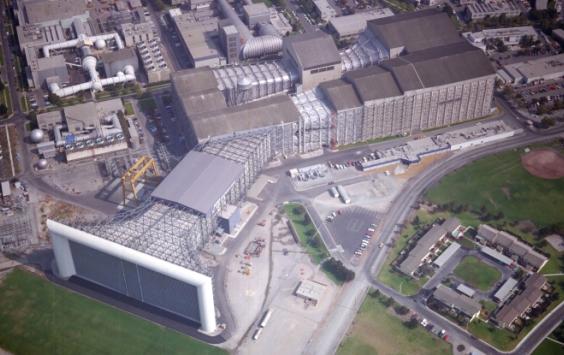Comprehensive glossary of condition monitoring terms
Welcome to our comprehensive glossary of condition monitoring terms. This resource is designed for engineers and professionals in the power industry, both in the UK and overseas. It provides clear definitions and explanations of key terms related to condition monitoring, vibration analysis, and predictive maintenance. Whether you are new to the field or looking to deepen your understanding, this glossary will help you navigate the complex terminology and enhance your technical knowledge.
A
Acceleration: The rate of change of velocity of a vibrating object, usually measured in g's (gravitational force units).
Accelerometer: A sensor that measures acceleration forces in one or more axes. View accelerometers.
Algorithm: A step-by-step calculation procedure, often used in data analysis and signal processing.
Aliasing: A distortion that occurs when a signal is undersampled, causing different signals to become indistinguishable.
Alignment: The process of adjusting the position of machinery components so that their rotational centres align, minimising vibration and wear.
Amplitude: The maximum extent of a vibration or oscillation, measured from the position of equilibrium.
Analog: A signal or data type represented by continuous values.
Analysis Parameters: Settings that determine how data is processed and analysed.
Averaging: A process of reducing noise in a signal by averaging multiple measurements.
Axial: Of the direction along the axis of rotation.
B
Background Noise: Unwanted ambient sounds that can interfere with signal detection.
Balancing: The process of adjusting the mass distribution of a rotating object to minimise vibration.
Bandwidth: The range of frequencies within a given band that a system can process.
Beat Frequency: A frequency produced when two frequencies are combined, equal to the difference between the two.
Bin: A discrete interval used in data analysis, particularly in FFT analysis.
Bit: The basic unit of information in computing, representing a binary state (0 or 1).
Buffer: A temporary storage area used to hold data while it is being moved from one place to another.
C
Calibration: The process of adjusting a device to ensure its accuracy. See Calibration services.
Centre of Gravity: The point at which the mass of an object is concentrated.
Charge Amplifier: A device used to convert the electrical charge from a piezoelectric sensor into a measurable voltage.
Condition Monitoring: The measurement, recording, and analysis of machinery parameters to determine machinery health and predict potential failures. See PlantProtech condition monitoring product range.
Cycle: One complete sequence of a periodic process, such as a wave.
D
Damping: The process by which vibrational energy is dissipated in a material or system.
Displacement: The distance a point on a vibrating object moves from its rest position.
Distortion: Any alteration of an original signal.
E
Eddy Current Probe: A sensor used to measure the displacement of a conductive material, often used for non-contact vibration monitoring.
Engineering Units (EU): Standardised units of measurement used in engineering.
EU: See Engineering Units.
F
Fast Fourier Transform (FFT): A mathematical algorithm used to convert time-domain data into frequency-domain data.
Fault Detection: The process of identifying defects or abnormalities in machinery components through analysis of condition monitoring data.
Frequency: The number of cycles a vibrating object completes in one second, measured in Hertz (Hz).
Frequency Response: The measure of a system's output spectrum in response to a stimulus. See Frequency Response Analysers.
Fundamental Frequency: The lowest frequency of a periodic waveform, representing the primary component of the wave.
H
Harmonics: Frequencies that are integer multiples of a fundamental frequency, often indicating issues like misalignment or imbalance.
Hertz (Hz): The unit of frequency, equal to one cycle per second.
I
IEPE Accelerometer: A type of accelerometer with an integrated circuit piezoelectric sensor. See accelerometers.
Imbalance: A condition where the mass distribution of a rotating object causes it to vibrate excessively.
Inertia: The resistance of any physical object to a change in its state of motion or rest.
K
Keyphasor: A reference signal used in vibration analysis to correlate measurements with the rotational position of a shaft.
L
Laser Alignment: A precision method for aligning shafts or other rotating components using laser technology.
Lateral Vibration: Vibration occurring perpendicular to the shaft's axis of rotation.
M
Mils: A unit of measure equal to one-thousandth of an inch, often used to quantify displacement.
Modal Analysis: A technique used to determine the vibration characteristics (natural frequencies, mode shapes) of a structure.
N
Noise: Unwanted sound or vibration that can interfere with the detection of signals in condition monitoring.
Non-Destructive Testing (NDT): Techniques used to evaluate the properties of a material or component without causing damage.
O
Oscillation: Repetitive variation in some measure about a central value.
P
Period: The time it takes to complete one cycle of a wave.
Phase: The position of a point in time on a waveform cycle.
Piezo-electric: A material property that converts mechanical stress into electrical charge.
Piezo-electric Transducer: A device that converts mechanical energy into electrical energy using the piezoelectric effect.
Portable Condition Monitoring Equipment: Tools and devices that can be easily transported and used in various locations to monitor machinery conditions. See PlantProtech Protor Mobile.
Power Factor: A measure of the efficiency with which electrical power is converted into useful work output.
Predictive Maintenance: Maintenance strategy based on the condition monitoring data to predict when maintenance should be performed.
Preventative Maintenance: Maintenance is performed regularly on equipment to reduce the likelihood of failure.
R
Real-time Analyser: A device that processes and analyses data as it is collected.
Real-time Rate (RTR): The rate at which real-time data is processed and analysed.
Resonance: The condition in which a vibrating system responds with maximum amplitude to an external force at a specific frequency.
Resonance Frequency: The specific frequency at which a system naturally oscillates with greater amplitude.
S
Shaker Test: A test in which a mechanical shaker is used to apply controlled vibration to a component or structure.
Signal: A measurable quantity that represents information.
Signal Analyser: A device used to analyse the properties of signals, such as amplitude, frequency, and phase.
Signal Conditioning: The process of manipulating a signal to make it suitable for analysis or further processing.
Sine Wave: A mathematical curve that describes a smooth repetitive oscillation.
Spectral Analysis: The analysis of the frequency spectrum of a signal to identify characteristic patterns and faults.
Strobe Light: A flashing light used to make a rotating or vibrating object appear stationary, aiding in visual inspection.
T
Thermography: The use of infrared imaging to detect heat patterns and identify potential issues in machinery.
Torsional: Oscillatory twisting motion of a rotating shaft, often due to irregularities in torque transmission. See Engie Laborelec Torso range for torsional vibration monitoring.
Transducer: A device that converts physical quantities into electrical signals for measurement. See Transducer calibration systems.
Transient: A temporary change in a system's state, such as a spike in vibration.
Trending: The analysis of data over time to identify patterns or changes that may indicate a developing fault.
Triaxial: Pertaining to three axes, often used to describe sensors that measure in three dimensions.
V
Velocity: The speed of a vibrating object in a particular direction, usually measured in mm/s or in/s.
Velocity Transducer: A device that measures the velocity of a vibrating object. See velocity transducers.
Velometer: An instrument used to measure velocity, especially in vibration analysis.
Vibration: Oscillatory motion of a physical object.
Vibration Analysis: The process of examining vibration patterns to detect anomalies and potential failures in machinery. See the Vibration Analysis training course.
Vibration Signature: A unique pattern of vibration that characterises the operating condition of a machine.
W
Wave: A disturbance that travels through a medium, transferring energy from one point to another.
Waveform: A graphical representation of a signal's variation over time.
Wavelength: The distance between successive crests of a wave.
Our glossary of condition monitoring terms serves as an essential reference for anyone involved in the maintenance and monitoring of industrial machinery. By familiarising yourself with these terms, you can better understand the processes and technologies that drive predictive maintenance and ensure the reliability and efficiency of critical assets. Explore the glossary to deepen your expertise and enhance your ability to implement effective condition monitoring strategies in your operations.

- Date: 25-26 September 2024
- Venue: Chatsworth House, Bakewell, Derbyshire, DE45 1PP
- Event organiser: Beran
Join us at the premier event for condition monitoring professionals. Connect with industry leaders, explore advancements in vibration monitoring, and discover innovative solutions to enhance operational efficiency and reliability. Engage in expert-led sessions, hands-on demonstrations, and valuable networking opportunities.

- Date: 12 - 14 Novemberber 2024
- Venue: Torrington, Devon
- Event organiser: Beran
Enhance your skills in vibration analysis with our comprehensive three-day training course. Led by industry experts Craig Hill and Omoruyi Onobhamiukor, this training is ideal for system engineers, mechanical engineers, and operations staff. Gain essential vibration monitoring and diagnosis skills, learn to interpret vibration data, and utilise historical data for predictive analysis.




